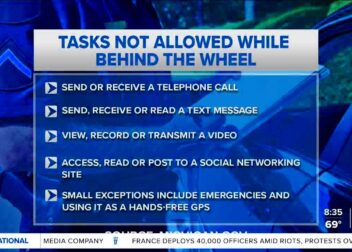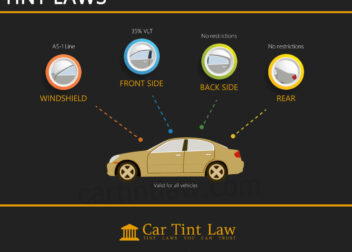A Look at Connecticut’s Car Seat Safety Laws
Car seat safety laws in Connecticut are crucial for protecting children while traveling in vehicles. These laws ensure that parents and caregivers understand the importance of using the right car seat for their child’s age and size. In this post, we will explore the specific regulations in Connecticut, the importance of car seat safety, and practical tips to ensure your child’s safety on the road.
Importance of Car Seat Safety

Car seat safety is not just a legal requirement; it’s a vital aspect of child safety. Every year, thousands of children are injured or killed in car accidents. Properly used car seats can significantly reduce these risks. Here are some reasons why car seat safety is essential:
- Protection in Crashes: Car seats are designed to absorb impact and protect children from injury during accidents.
- Proper Fit: Using the right car seat ensures that the child is securely fastened, minimizing movement during a crash.
- Long-term Safety: Following car seat laws instills good safety habits as children grow, promoting responsible behavior in the future.
Understanding how to use car seats correctly can save lives, making it crucial for parents to stay informed about the latest safety standards.
Overview of Connecticut’s Car Seat Regulations
Connecticut has specific laws regarding car seat use, which are designed to protect children in vehicles. Here’s a breakdown of these regulations:
| Car Seat Type | Age Requirement | Weight Requirement |
|---|---|---|
| Rear-Facing Car Seat | Birth to 2 years | Up to 40 pounds |
| Forward-Facing Car Seat | 2 to 7 years | 40 to 65 pounds |
| Booster Seat | 7 to 12 years | Over 65 pounds |
| Seat Belt | Over 12 years | Over 100 pounds |
It’s important to note that Connecticut law mandates children under 16 to be properly restrained in an appropriate car seat or seat belt. Failure to comply can lead to fines and penalties. Understanding these regulations can help parents make informed decisions about car seat usage, ensuring the safety of their children while traveling.
Types of Car Seats and Their Usage
When it comes to car seat safety, understanding the different types of car seats available is essential. Each type is designed for a specific age group and weight category, ensuring maximum safety for children during car travel. Here’s a closer look at the various types of car seats:
- Rear-Facing Car Seats: These are meant for infants and toddlers. They provide crucial head and neck support and should be used until the child reaches the seat’s height or weight limit, usually around 2 years old.
- Forward-Facing Car Seats: Once your child outgrows their rear-facing seat, they can transition to a forward-facing car seat. This type is equipped with a harness and is used until the child reaches the maximum height or weight limit, typically between 40 and 65 pounds.
- Booster Seats: After outgrowing the forward-facing seat, children should use a booster seat. Booster seats help position the vehicle’s seat belt correctly across the child’s body, enhancing safety until they are big enough to use the seat belt alone.
- Seat Belts: Once children surpass the booster seat requirements, they can use standard seat belts. It’s crucial that the seat belt fits them properly for effective protection.
Knowing which type of car seat to use at what stage can significantly reduce the risk of injury during car travel. Always check your car seat’s user manual for specific instructions on proper usage.
Age and Weight Requirements for Car Seats
Each car seat type comes with specific age and weight requirements that parents must follow to ensure their child’s safety. Here’s a detailed breakdown of these requirements:
| Car Seat Type | Age Range | Weight Limit |
|---|---|---|
| Rear-Facing Car Seat | Birth to 2 years | Up to 40 pounds |
| Forward-Facing Car Seat | 2 to 7 years | 40 to 65 pounds |
| Booster Seat | 7 to 12 years | Over 65 pounds |
| Seat Belt | 12 years and older | Over 100 pounds |
These guidelines are designed to help you make informed decisions about when to switch your child to a different type of seat. Remember, keeping your child in the appropriate seat for as long as possible is the best practice for safety.
Installation Guidelines for Car Seats
Installing a car seat correctly is just as important as choosing the right type. Here are some essential installation guidelines to ensure that your car seat provides maximum protection:
- Read the Manual: Always start by reading both the car seat manual and your vehicle’s manual. Each car seat may have different installation methods, so it’s crucial to follow the specific instructions.
- Choose the Right Location: The safest place for a car seat is in the back seat, away from airbags. If you have multiple children, the middle seat is often the safest spot.
- Secure the Car Seat: Use either the LATCH system or the vehicle’s seat belt to secure the car seat. If using a seat belt, ensure it is locked properly and that the seat doesn’t move more than an inch when pulled.
- Check the Angle: For rear-facing seats, ensure the angle is correct to support the child’s head and neck. Many car seats have built-in indicators to help with this.
- Test for Stability: After installation, give the car seat a firm shake. If it moves more than an inch side to side or front to back, adjust it until it feels secure.
Regularly check the installation of your car seat, especially after long trips or if the seat has been moved. Proper installation can make all the difference in keeping your child safe on the road.
Common Mistakes to Avoid with Car Seats
When it comes to car seat safety, even small mistakes can lead to serious consequences. Being aware of these common errors can help keep your child safe while traveling. Here are some frequent mistakes parents make:
- Not Using the Right Car Seat: Always ensure that you are using the appropriate car seat based on your child’s age, weight, and height. Using a seat that is too small or large can compromise safety.
- Improper Installation: Many parents struggle with correctly installing car seats. Take the time to read the manuals and follow guidelines to ensure a secure fit.
- Incorrect Harnessing: The harness should be snug against your child’s chest. A loose harness can allow too much movement, increasing the risk of injury in a crash.
- Switching Too Soon: Some parents transition their child to a booster seat or seat belt before they reach the recommended age or size. Follow the guidelines to keep your child in a car seat as long as necessary.
- Ignoring Expiration Dates: Car seats have expiration dates, usually between six to ten years. Always check the date and replace seats as needed to ensure safety.
By avoiding these common mistakes, you can significantly improve your child’s safety in the car. Always stay informed and vigilant about car seat regulations.
Frequently Asked Questions about Car Seat Safety Laws
Car seat safety can be confusing, and many parents have questions. Here are some frequently asked questions to help clarify important aspects of Connecticut’s car seat laws:
- What is the law regarding car seats in Connecticut? Connecticut law requires children under 16 to be secured in a car seat appropriate for their age and size.
- How long should my child be in a rear-facing car seat? Children should remain in a rear-facing seat until they are at least 2 years old or reach the seat’s maximum weight or height limit.
- Can I use a second-hand car seat? It’s generally not recommended to use second-hand car seats unless you are sure they haven’t been in an accident, are not expired, and come with all the original parts.
- Where can I get help with car seat installation? Many hospitals, fire stations, and local health departments offer car seat installation checks. It’s a great way to ensure your car seat is properly installed.
- What should I do if my child refuses to sit in their car seat? Consistency is key. Make car seat use a non-negotiable rule. You can also involve your child by letting them choose their car seat cover or toys for the ride.
Understanding these common questions can help parents navigate car seat laws and practices more effectively.
Conclusion on Car Seat Safety in Connecticut
Car seat safety is a vital part of protecting our children during travel. Connecticut has established clear laws and guidelines to help parents ensure their children are safe on the road. By understanding the different types of car seats, age and weight requirements, and installation guidelines, you can make informed decisions that prioritize your child’s safety.
Remember, avoiding common mistakes and staying informed about car seat safety can significantly reduce the risk of injury in an accident. Always keep your child in the appropriate car seat for as long as possible, and don’t hesitate to seek help if you’re unsure about the installation or usage of a car seat.
Ultimately, making car seat safety a priority is an essential responsibility for every parent. By doing so, you contribute to a safer driving environment for all.


